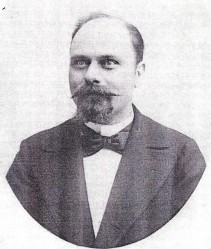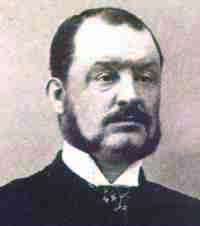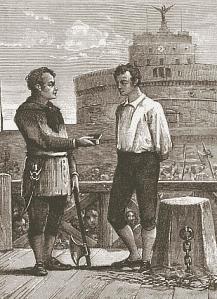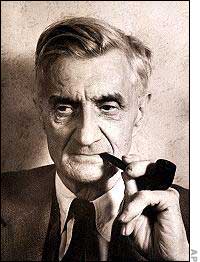It goes without saying that executioners are, by definition, merciless. But these men were skilled professionals when it came to exacting death in a cold fashion. Many on our list were pioneers of efficient killing techniques during a time when capital punishment was an acceptable way of dealing with traitors, criminals or any person who upset the status quo. Others come from long lines of executioners, and saw enacting justice through swift executions as being their birthright.
10. Albert Gustaf Dahlman
Albert Gustaf Dahlman was the last professional executioner in Sweden, though that’s far from the only reason he’s notorious. It’s surprising to think that at one time the job of executioner was an extremely sought after and respected position, but Dahlman was picked out from 200 applicants after the last man to hold the job immigrated to the United States. From 1885 to 1910 Dahlman conducted the last six executions to occur in Sweden before the country abolished capital punishment. Dahlman conducted the only guillotine execution to occur in Sweden, and also conducted the execution of Anna Mansdotter. Mansdotter is infamous in Sweden as its most prolific female murder. She was sentenced to death after she was found guilty of killing her daughter-in-law.
9. Anatole Deibler
Anatole Deibler was one of France’s most famous executioners. He was reported to have beheaded over 395 criminals, and was known to boast that he could guillotine a person faster than you could say the word “guillotine.” Deibler’s family was the premier family of executioners in France, and Anatole became somewhat of a celebrity after he was appointed Executioner-in-Chief in 1899. He was constantly harassed for interviews and followed by huge crowds upon his arrival in towns to conduct executions. Deibler experienced increased fame after death when it was discovered that he had kept 14 detailed diaries that outlined all of the executions that he had conducted. Deibler’s accounts of France during the mid and late 1800s, as well as his depiction of the executions he conducted, have proven to be important historical sources. In 2003, Deibler’s 14 diaries sold for a whopping €100,249.
8. Albert Pierrepoint
Pierrepoint was a member of one of the most famous executioner families in Britain. His father, Henry, and his uncle, Thomas, were respected for crafting an exceptional execution style that was adopted by Albert. In fact, Pierrepoint was the last official hangman of Britain. He gained prominence during the Nuremberg Trial when he was sent to Germany in order to execute over 200 officials who were found guilty of war crimes. Albert was constantly hounded in the media, but was respected by the government for upholding the highest standards of conduct in his executions. From 1932-1956 Pierrepoint was credited with the deaths of over 400 men and 17 women.
7. William Marwood
William Marwood was an official British Crown Executioner, and is famous for designing execution methods that killed instantly, making him the first scientific hangman. During Irish uprisings he was famous for executing four of The Invincibles, who were leaders of the anti-British movement. In 1872 Marwood perfected the long drop execution technique, which used a seven to 10 foot drop in order to bring about instant death by hanging. Executioners in the past had avoided the long drop because of fear that the knots would slip, which would cause agonizing strangling instead of a swift neck break. Marwood is remembered more for the technique he helped make popular than the number of executions he committed, although over his nine year career Marwood hung 176 convicts.
6. James Berry
Berry was a famed Victorian era executioner who had the privilege of learning the craft from William Marwood. As Marwood’s assistant Berry learned to take a scientific approach to execution. Berry is famous for being a new, more civilized executioner, never referring to himself as a “Hangman.” In Berry’s day hanging had changed significantly, and were no longer public events or spectacles. Even the press was eventually excluded from attending. Berry conducted over 130 executions and is known for being the first British hangman to resign from his post. He’s also known for some of the mishaps that occurred during his executions. For example, decapitation occurred in the execution of Robert Goodale due to the force of the drop.
5. Charles Henri-Sanson
The Henri-Sanson family conducted executions for the French for over 200 years. Known for his part in the Revolutionary Reign of Terror, Charles was a showman who had record attendance numbers for his executions. He was once purportedly told to slow down after conducting 300 back-to-back murders, because the locals were complaining about the stench of blood. Henri-Sanson is famous for speaking out against the French government’s decision to eliminate hanging and make beheading the only form of capital punishment in France. In his prolific writings he argued, “Swords have very often broken in the performance of such executions, and the Paris executioner possesses only two.” The debate he led about the virtues of hanging and beheading led to the adoption of the guillotine as the proper beheading method.
4. Giovanni Battista Bugatti
Known as the Master of Justice, Buggatti was hailed as an Italian hero for conducting over 500 papal executions. He was also famous for holding the longest tenure as a papal executioner, and his work serves as a true illustration of the power once possessed by the Catholic Church. During his time, Bugatti was quite the celebrity within the Papal States. Even the famous writer Lord Byron wrote about Buggati after watching one of his executions. Furthermore, the famous Italian poet Giuseppe Giaocchino Belli wrote several satirical poems about him. Buggati’s legacy even remains strong to this day, featuring in a ghoulish nursery rhyme that Roman mothers sing to their children.
3. Robert G. Elliott
Known as the “Agent of Death,” Robert G. Elliot was the chief executioner of New York State and an extremely important figure in the American criminal justice system. From 1890 to today, Elliot was the executioner for about 10% of America’s inmates. Elliot is unique in that he is one of the few famous executioners in modern history who conducted their executions with the electric chair. He’s responsible for some of the most notorious inmates in U.S. history, including Julius and Ethel Rosenberg. He later became known as prolific writer and, ironically, a strong opponent of the death penalty.
2. Fernando Alvarez de Toledo
Also known as the Duke of Alva, Fernando operated during the Spanish Inquisition and was famed for being King Phillip of Spain’s chief executioner. He is rumored to have executed 8,000 people in a single day, and was often heard boasting about how he had killed 18,000 Dutchmen while in the Netherlands. Fernado’s reputation for mercilessness gave Phillip the comfort of knowing that he had the brutality and force needed to suppress any uprising. But Fernando had a crisis of faith later in life and sought to forsake his merciless ways. King Phillip was unimpressed, and only granted Fernando’s request to retire after multiple pleas.
1. Richard Brandon
Richard Brandon’s practices became the yardstick with which all other executioners were judged. His technique was to simply sever a prisoner’s head with one single blow. This was a crowd favorite, and the swiftness was also appreciated by those who were being executed. He reportedly refined this technique by practicing on dogs and cats for years. The most famous person Brandon ever executed was King Charles I in 1649, during which Brandon and his assistant wore masks and fake beards for fear of political retribution.










5 Comments
What about Derick, the Elizabethan executioner? Oil drilling rigs and cranes are named after him based on the multiple execution rig (the Tyburn Tree) he invented. He used sword, axe and rope, depending on the status of the person being executed.
Robert Elliott did not execute the Rosenbergs. He died in 1939, nearly 14 years prior to their executions.
Ca, c’est un argument imparable ! 🙂
Albert Pierrepoint wasn’t the last UK executioner, it’s a well known urban myth and one of the reasons the recent film about him had to have its inaccurate title changed for the UK market. Over 30 executions occurred between his resignation in 1956 and 1964. The majority of these were carried out by Harry Allen while a handful fell to the care of Robert Stewart. Interestingly, they both officiated on the same date at the same time (albeit at different prisons) to execute the last two condemned in August 1964. Therefore, there is no single “last executioner” for the UK.
Justin Cook